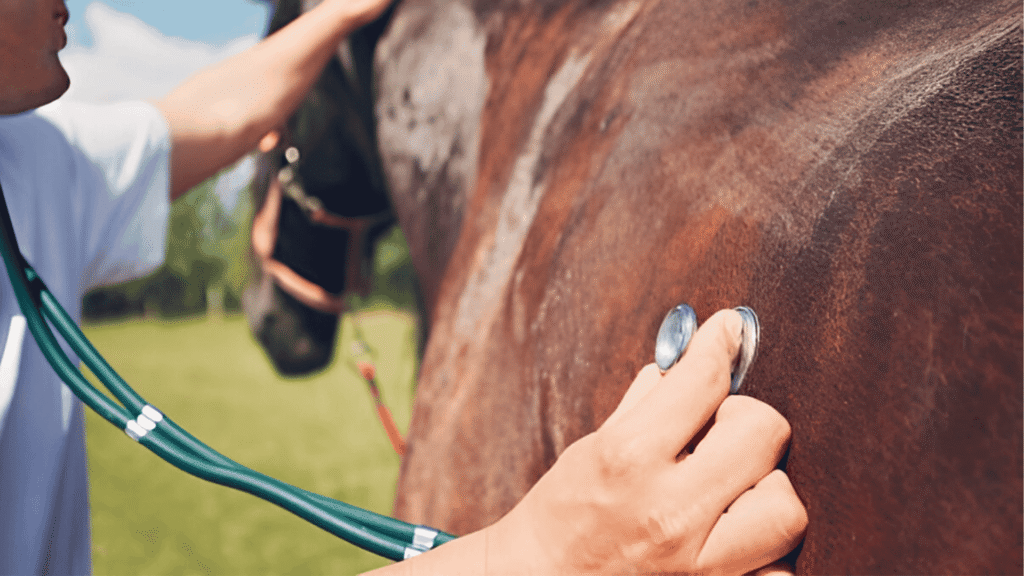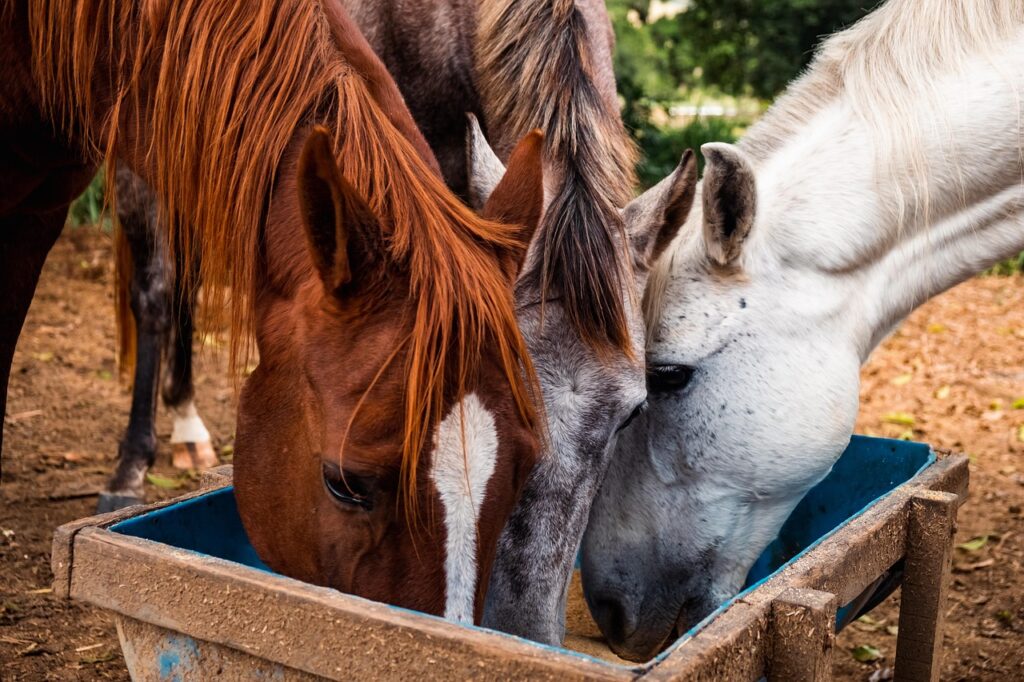Horses, like any animal, are susceptible to a variety of health problems. One of the most common and concerning problems horse owners face is respiratory problems. Respiratory issues in horses can be anything from minor, short-duration illnesses to major, long-duration diseases that can affect a horse’s general quality of life. It is important that every horse owner is aware of the symptoms, causes, and potential treatments for these issues.
In this comprehensive guide, we are going to discuss what you need to know about horse respiratory issues, from the symptoms to the treatment options, and how to keep your equine friend in top shape.
Understanding Horse Respiratory Issues
Horses are very athletic animals, frequently under intense physical exertion, which puts a huge demand on their respiratory system. Their extensive lung capacity and capacity for hard work predispose them to some respiratory conditions, some of which are very common while others are uncommon but serious.
Respiratory diseases in horses can be classified into acute and chronic diseases. The acute diseases can either be infections or allergic responses, while the chronic diseases can be longstanding diseases such as asthma or other airway disease.
Types of Respiratory Diseases in Horses
There are several types of respiratory diseases that a horse may have. These range from bacterial or viral infections to chronic conditions that could be exacerbated by environmental factors or genetics.
1. Inflammatory Airway Disease (IAD)
Inflammatory Airway Disease (IAD) is one of the most common respiratory diseases in horses. It is an inflammation of the airways and is most commonly followed by cough, nasal discharge, and difficulty breathing. IAD is usually caused by environmental factors such as exposure to dust, mold, or even polluted air. It is more likely to happen in stabled horses with inadequate ventilation or horses that are not turned out regularly.
The signs of IAD are:
- Persistent coughing
- Nasal discharge
- Decreased exercise tolerance
- Wheezing or increased respiratory effort
2. Recurrent Airway Obstruction (RAO)
Also known as equine asthma or heaves, Recurrent Airway Obstruction (RAO) is a chronic disease that disrupts the ease of breathing in the horse. It is brought about by environmental allergens such as dust, pollen, or mold and can lead to severe coughing and wheezing, particularly during or after exercise. RAO primarily affects older horses but can affect any age.
Some of the signs of RAO include:
- Severe coughing
- Nasal discharge (green or yellow)
- Breathing difficulty, especially when exerting
- Weight loss (in severe cases)
3. Equine Influenza
Equine influenza is a highly infectious viral respiratory disease that infects a horse’s upper respiratory system. While it has a preference for horses of any age, young horses and unvaccinated horses are most at risk. The infection is spread through the air in droplets and can be compounded by poor ventilation in barns or stables.
Symptoms of Equine Influenza are:
- Fever (usually higher than 102°F)
- Cough and nasal discharge
- Depression and loss of appetite
- Swollen lymph nodes
4. Strangles
Strangles is a very contagious respiratory illness brought about by the Streptococcus equi bacterium. Although it can attack horses of any age, young horses are most susceptible. Strangles is characterized by fever, nasal discharge, and swelling of lymph nodes, which can lead to abscesses and difficulty in swallowing.
Symptoms of Strangles include:
- Fever
- Nasal discharge (typically thick and yellow)
- Swelling of lymph nodes (under the jaw or neck)
- Difficulty in eating or swallowing
Horse Respiratory Problem Causes
Several reasons are responsible for causing respiratory issues in horses. These include:
1. Environmental Factors
Poor ventilation, high levels of dust and mold, and exposure to allergens are considerable environmental determinants that can lead to equine respiratory disorders. Horses stabled in poorly ventilated conditions are particularly at risk of developing IAD and RAO.
2. Viral and Bacterial Infections
Viral diseases like equine influenza and bacterial diseases like strangles can cause severe respiratory symptoms. These diseases are normally spread by direct contact with an infected horse or contaminated equipment and must be treated by a veterinarian as quickly as possible.
3. Genetic Predisposition
Certain breeds and individual horses can be genetically predisposed to respiratory issues. For example, horses with small airways or compromised lung function are more susceptible to conditions like RAO.
4. Exercise and Training
Exertion, especially during hot or humid conditions, can put a strain on a horse’s respiratory system and exacerbate current conditions. Horses that are subjected to intense training with insufficient time to rest and recover can also be at risk of respiratory distress.
Diagnosis of Horse Respiratory Problems
As soon as you notice any sign of respiratory distress in your horse, it is extremely essential to get veterinary consultation with no delay. Early detection and diagnosis can significantly affect the outcome of treatment.
Diagnosis of equine respiratory issues typically includes:
- Physical Examination: The vet will auscultate for abnormal lung sounds and search for signs of distress.
- Blood Tests: To search for signs of infection or inflammation.
- Endoscopy: A procedure where a flexible tube with a camera is inserted into the airways of the horse to look for infection, inflammation, or damage.
- Radiographs (X-rays): To visualize the lungs and identify any blockage, infection, or abnormality.
- Tracheal Wash or Bronchoalveolar Lavage (BAL): A sample is taken from the airways of the horse to identify infection or inflammation.
Treatment of Horse Respiratory Issues
The treatment of respiratory issues in horses depends on the severity and cause of the condition. The following are some of the treatment options that are commonly used:
1. Medication
- Anti-inflammatory Drugs: Steroids and NSAIDs (non-steroidal anti-inflammatory drugs) may be given to reduce inflammation in the airways.
- Bronchodilators: These drugs widen the airways to improve airflow and make breathing more comfortable.
- Antibiotics: Antibiotics will be given if the diagnosis is a bacterial infection to cure the infection.
- Cough Suppressants: These may be prescribed to cure stubborn coughing.
2. Environmental Management
- Improved Ventilation: Ensuring good ventilation in the horse’s stable or barn can significantly reduce the risk of respiratory issues. You may also wish to use a high-quality bedding material to reduce dust.
- Allergen Avoidance: Reducing exposure to allergens like hay dust, mold, and pollen can prevent exacerbations in horses with conditions like RAO.
- Exercise Adjustments: Horses with respiratory disease should be exercised during well-ventilated periods and cooler times of day to minimize respiratory stress.
3. Vaccinations
Vaccinations for illnesses like equine influenza and strangles can avert respiratory infections. Horses that are exposed to others, e.g., at boarding stables or in competition, require frequent vaccinations.
Preventing Horse Respiratory Issues
Prevention is always better than cure, and there are several steps horse owners can take to reduce the risk of respiratory issues:
- Provide Good Ventilation: Keep stables or barns well-ventilated to minimize the accumulation of dust, mold, and other allergens.
- Turn Out Frequently: Give your horse as much turnout as possible, since fresh air is vital to their respiratory system.
- Monitor Air Quality: Keep exercising horses away from areas with excessive dust, smoke, or pollution, and utilize air purifiers in the barn if feasible.
- Routine Vet Visits: Arrange frequent veterinary check-ups to detect any respiratory issues early so that they don’t escalate.
- Vaccination: Keep your horse’s vaccinations up to date to prevent respiratory infections like equine influenza and strangles.
Conclusion
Equine respiratory issues are a fact of life for many horse owners, but with the right information and proactive care, these diseases can be effectively managed. If you notice your horse experiencing any sign of respiratory distress, such as coughing, nasal discharge, or labored breathing, don’t hesitate to call your veterinarian. Prompt treatment is essential to long-term health and well-being for your horse.
If you found this article useful, subscribe to our blog for more professional tips on horse health and care.

Dr.Vala Siddharajsinh Raysinhbhai is a certified Animal Husbandry Technician, holding a diploma from Kamdhenu University, India. His expertise covers livestock breeding, nutrition, disease control, and animal welfare. Passionate about rural veterinary care, he actively contributes to animal health awareness and sustainable livestock management through both fieldwork and educational content.





